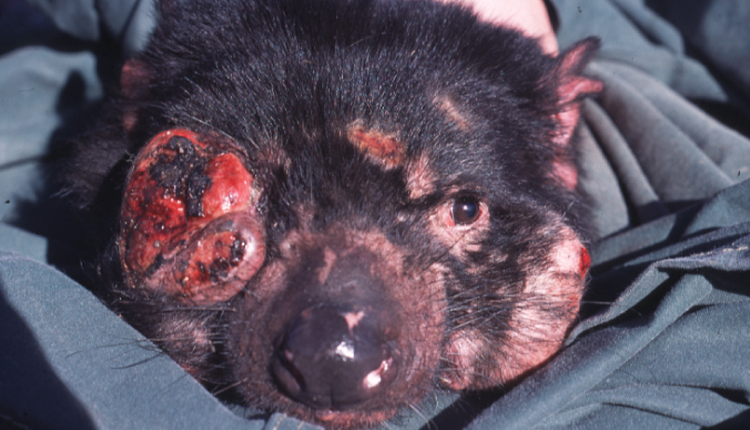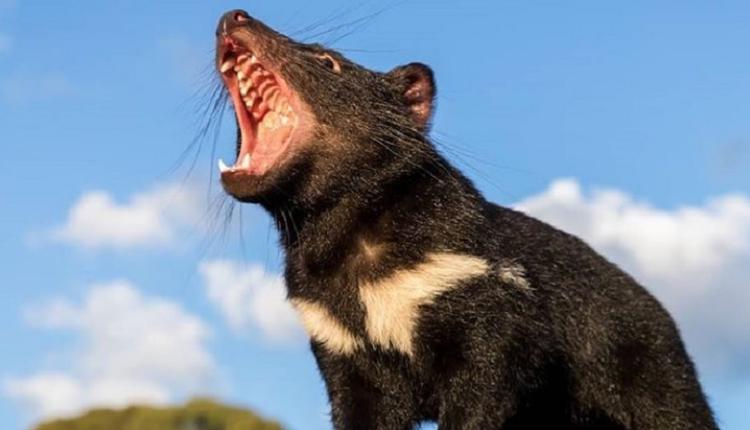在澳洲大陆绝迹超过3000年后,外号“塔斯马尼亚恶魔”(Tasmanian devil)的袋獾,最近重新引进了澳洲!
袋獾是澳洲极具象征性的濒危动物,早在数千年前于澳洲大陆本土消失殆尽,当前全球仅在澳洲的塔斯马尼亚,可以找到野生袋獾的踪迹。
不过在最近,澳洲自然环境保护组织Aussie Ark公布了一项最新的复育行动,表示已将26只塔斯马尼亚恶魔送到澳洲大陆一处动物庇护所,将展开阶段式的繁殖、复育、野放评估与试验。
小恶魔拥有臭脾气
袋獾是世界上现存的肉食性有袋哺乳动物。因为叫声刺耳而被当成是恶魔的化身,因此也叫做“小恶魔”。
别看“小恶魔”安静的样子萌萌的,让人心生怜悯,但是它们的脾气可坏透了!经常动不动就和同伴撕咬、大打出手。因为它的坏脾气,被视为对人类有威胁,因此曾被过度捕杀,导致一度濒临灭绝。几千年前,他们就在澳洲大陆绝迹了,只能在塔州看到他们的身影。
面部肿瘤病导致数量锐减
袋獾一般昼伏夜出,以猎捕其他动物或吃腐肉维生,野外平均寿命仅约6年。在过去,袋獾曾因被认为可能咬杀家畜,而遭人类大量猎捕,导致其数量锐减。虽然后来有关保护法规让数量一度回升,但1990年代以来,一种叫做“袋獾面部肿瘤病”(DFTD)的未知疾病,让袋獾遭遇物种危机。
这种不明传染疾病,会让袋獾面部与口腔内部,长出大小肿瘤,进而影响袋獾正常进食,最终导致饥饿死亡,且至今仍无法找到根治办法。

2006年,科学家发现一个惊人的事实,小恶魔之间的癌症是种群内部传染的!它们互相撕咬就能彼此传染癌症!真是太可怕了!
据估计,1990年代中期以来,塔斯马尼亚恶魔的野生数量已从15万锐减至2万5000只,并遭国际自然保护联盟(IUCN)列为“濒危”。为了拯救这个物种,科学家们展开了研究。
“小恶魔”需要格外保护
“小恶魔”的悲惨情况需要大家格外关心,它们提供了科学家们一个研究癌症的最好样本。同时也惊醒了人类为什么要保护生物多样性!
自然界的生物环环相扣,我们根本无法预知少一个物种之后会产生什么可怕的结果。所以这次把“小恶魔”放归澳洲大陆显得特别重要。这次,自然环境保护组织Aussie Ark在新州Hunter region的Barrington Tops,放生了11只小恶魔。今年早些时候,他们也在同一个保护区放生了另15只袋獾,总共放生了26只。按照计划,明年他们还要继续放生20只。
恢复澳洲生态的第一步
澳洲这片土地保存了其它地方不存在的古老动植物。不过,澳洲的生态系统非常脆弱,一旦稍有失去平衡,就会导致巨大灾难。这也是为什么澳洲是世界上物种灭绝率最高的国家! 这次把“小恶魔”放归澳洲野外是该保育组织“野生化”澳洲使命的第一步。
众所周知,去年的林火造成了大批野生动物和植物死亡,许多考拉也无家可归。澳洲的自然环境保护组织还要努力去恢复被破坏的生态环境。环境保护专家认为,重新引入“小恶魔”到澳洲大陆,可帮助控制负鼠和小袋鼠的泛滥,以及减少野猫和狐狸的数量。因为这些动物的泛滥,让很多澳洲本土的小型动物都生存艰难。“小恶魔”回山后,将有助本土的小型动物的恢复。
Aussie Ark的总裁Tim Faulkner说,释放这些小怪兽是该国生态恢复的一个重大里程碑。
保守生态专家有疑虑
但对于这项被Faulkner称作“历史性”第一步的计划,也有更保守的意见抱持疑虑。澳洲迪肯大学的生态专家里奇指出,任一物种再引入到任一生态系统,其实都存在一定风险,对动植物都可能造成程度不一的影响。
据悉,在2012年,袋獾引入塔斯马尼亚东岸的玛丽亚岛,造成了当地几个短尾水薙鸟 (Short-tailed shearwater)群落的消失。尽管袋獾确实让玛丽亚岛另外2种会猎食短尾水薙鸟的外来物种——猫与刷尾负鼠(Common brushtail possum)——数量得到压制,但袋獾也被发现会开始吃海鸟的蛋与雏鸟。
不过,当前澳洲方舟与多个保育团体合作的袋獾计划,虽然终极目标是期待能让袋獾回归它们早在千年以前就已为家的澳洲大陆,但当前仍只是在庇护所适应观察的初步阶段。
对于未来进度,Faulkner也乐观地称:“我真的相信随著时间流逝,塔斯马尼亚恶魔会成为澳洲大陆寻常的一份子,3000年前他们就在这里了,对于生态环境来说,这千年不过一眨眼。”
本文由看新闻网原创、编译或首发,并保留版权。转载必须保持文本完整,声明文章出自看新闻网并包含原文标题及链接。
本文网址:https://vct.news/news/6d0b8bd0-5948-46e5-9c9c-7f36b643abbb


评论被关闭。